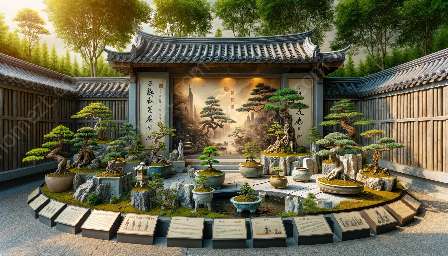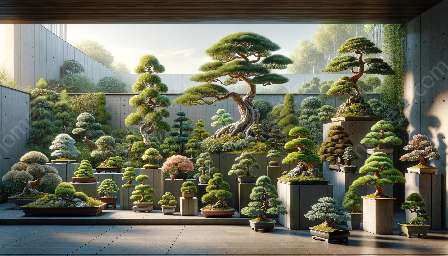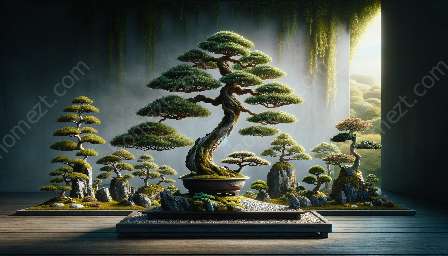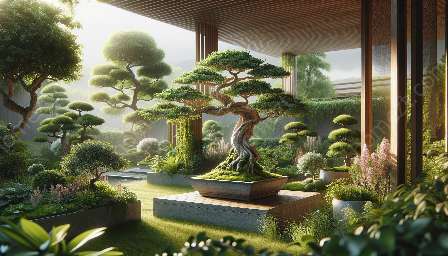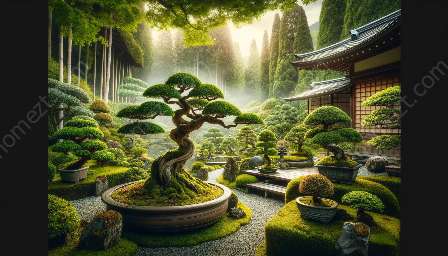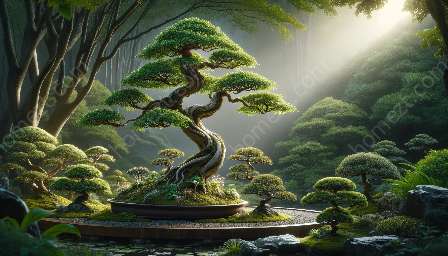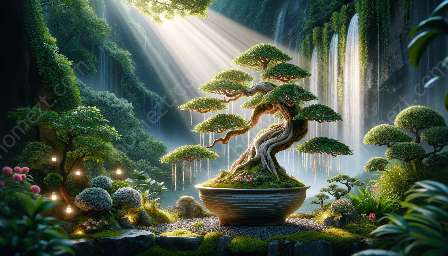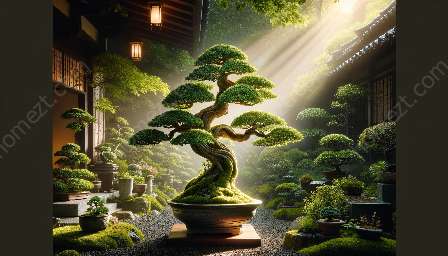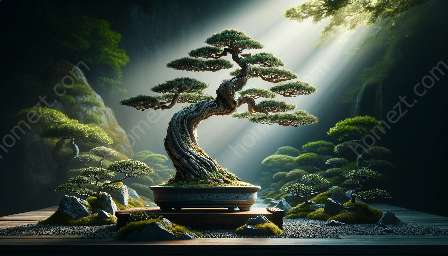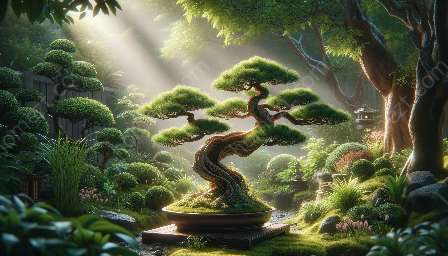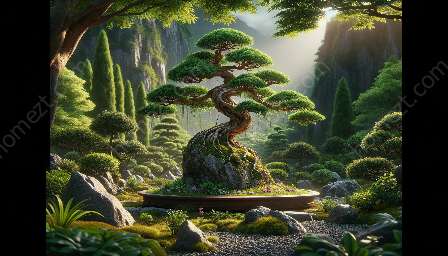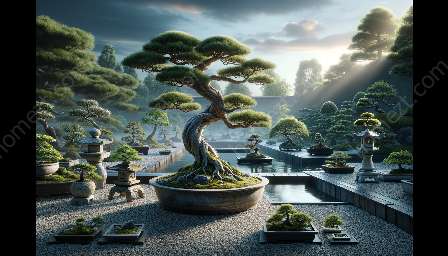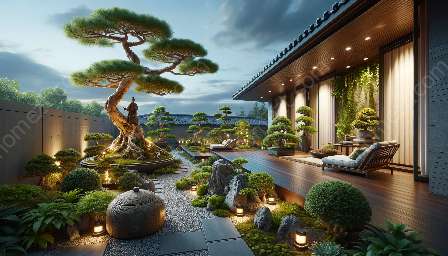When it comes to cultivating bonsai and creating beautiful garden and landscape designs, the windswept bonsai style offers a unique and captivating aesthetic. In this topic cluster, we will explore the art and technique of windswept bonsai, its compatibility with bonsai cultivation, gardening, and landscaping, as well as the methods for creating and maintaining windswept bonsai trees.
Understanding Windswept Bonsai
Windswept bonsai, also known as Fukinagashi in Japanese, is a style that mimics the appearance of a tree shaped by prevailing winds in harsh environments. This style often features a trunk and branches that appear to be leaning in one direction, with foliage and branches swept to the opposite side, creating a dynamic, windswept effect.
Features of Windswept Bonsai
Windswept bonsai trees are characterized by their asymmetrical and dramatic appearance. The trunk is typically slanted, giving the impression of a tree struggling against strong winds, while the branches and foliage are carefully pruned and shaped to convey the effect of wind-blown movement. The overall result is a visually striking representation of resilience and perseverance.
Applying Windswept Style in Bonsai Cultivation
Creating a windswept bonsai requires careful planning and execution. Start with selecting a suitable tree species that can thrive in your local climate and is conducive to the windswept style. Consider using hardy conifers such as pines, junipers, or spruce, as they are well-suited for achieving the windswept look.
During the initial styling phase, focus on shaping the trunk and primary branches to reflect the characteristic slant and windswept movement. This may involve wiring, pruning, and carefully positioning the branches to achieve the desired effect. As the tree matures, regular maintenance is essential to preserve the windswept appearance and ensure the tree's continued health and vigor.
Integrating Windswept Bonsai in Gardening and Landscaping
Windswept bonsai can serve as captivating focal points in garden and landscape designs, adding an element of natural drama and artistic expression. When incorporating windswept bonsai into a garden or landscape, consider the overall composition and visual balance. Place these unique bonsai specimens strategically to create interest and evoke a sense of movement within the landscape.
Furthermore, the windswept style of bonsai can harmonize with broader gardening and landscaping themes, such as coastal or mountainous landscapes, where the windswept effect resonates with the natural environment. With careful placement and complementary plant selections, windswept bonsai can enhance the overall aesthetic and storytelling aspects of any garden or landscaping project.
Maintaining Windswept Bonsai
Proper care and maintenance are crucial for preserving the windswept appearance of bonsai trees. Regular watering, fertilization, and monitoring for pests and diseases are essential for the overall health and vigor of windswept bonsai. Additionally, periodic pruning and shaping should be performed to retain the windswept character and prevent overgrowth that may diminish the desired effect.
When cultivating windswept bonsai outdoors, consider the exposure to natural elements, particularly strong winds. While windswept bonsai are designed to evoke the appearance of trees shaped by wind, they still require protection from excessive and damaging winds to prevent structural damage and maintain their aesthetic appeal.
Conclusion
The windswept bonsai style offers a fascinating portrayal of nature's resilience and beauty, making it an intriguing choice for bonsai enthusiasts, gardeners, and landscapers alike. By understanding the principles and techniques of windswept bonsai, one can create captivating displays that harmonize with the art of bonsai cultivation, gardening, and landscaping, enriching outdoor spaces with visual drama and symbolic storytelling.


